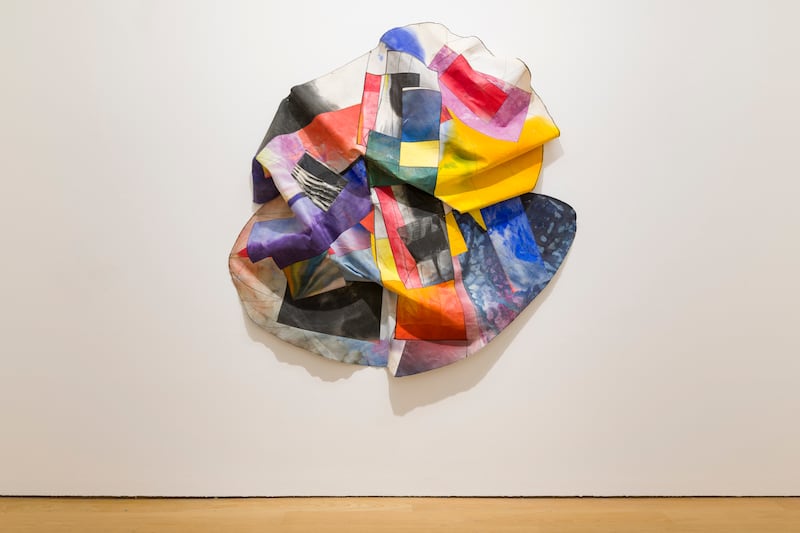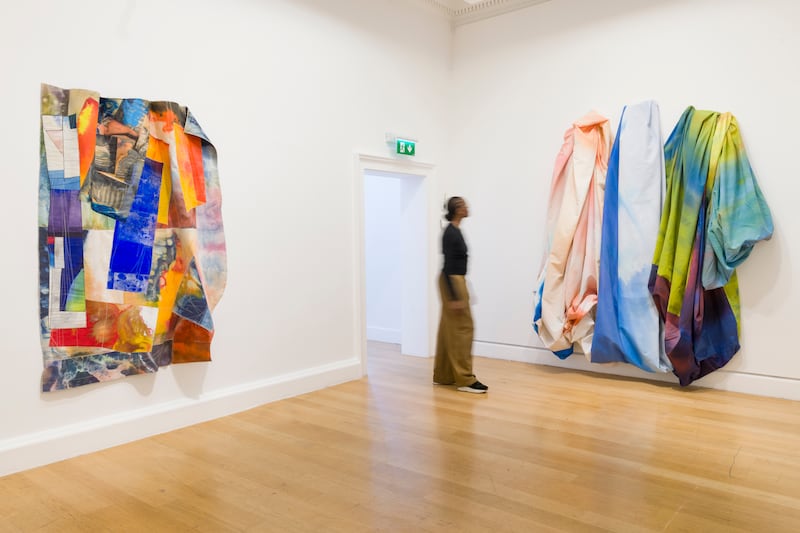Sam Gilliam: Sewing Fields
Irish Museum of Modern Art, Dublin
★★★★☆
First, a confession: before I visited this exhibition I had never heard of Sam Gilliam. Perhaps my focus is too narrowly confined to Ireland and our closest European neighbours, but the American painter’s name was not familiar.
Now, thanks to this show, Gilliam’s status in 20th-century art history will always be etched in my memory: he was not only an outstanding experimentalist in the neo-avant-garde tradition but also a touchstone in the development of African-American art.
Born in Mississippi in 1933, Gilliam was the seventh of eight children born to a homemaker and carpenter. He attended the University of Louisville, in Kentucky, in the 1950s, graduating with a degree in creative arts. After joining the US army for three years, he returned to Louisville and then, in 1962, moved to Washington, DC, where he stayed for the rest of his life.
To give a flavour of the time, his first wife, Dorothy Butler Gilliam, was the first black woman to be hired as a reporter by the Washington Post, as the exhibition catalogue notes.
READ MORE
[ Lunch with a side of art: Seven Irish galleries with great cafesOpens in new window ]



In spite of the systemic discrimination African Americans faced, Gilliam quickly built a name for himself, achieving widespread success by the early 1970s. Exhibiting regularly throughout the United States, he joined the US pavilion at the Venice Biennale in 1972.
By the early 2000s Gilliam was internationally acclaimed, exhibiting in museums and art institutions across the globe, including a big retrospective at the Kunstmuseum Basel, The Music of Colour, in 2018. He died in 2022.
The artist’s prodigious style drew its power from his innovative, multidisciplinary approach. Gilliam was best known for his drape paintings, which resulted from an assiduous questioning of the tenets of his medium. First shown in the late 1960s, and also known as “sculptural” and “suspended” paintings, they involved separating the canvas cloth from its frame, allowing the painted material to bunch and twist in unexpected ways.
Though Imma’s notes give a sweeping overview of his artistic profile, Sewing Fields is devoted to a particular passage in Gilliam’s work: in 1993 the artist spent three weeks on a residency at Ballinglen Arts Foundation, living and working on the coast of Co Mayo.
Aviation regulations meant he couldn’t bring his regular petroleum-based pigments with him, so instead he stained swathes of polypropylene fabric in his Washington studio and, after shipping them to Ireland, stitched, amended and reformatted them, often working with a local dressmaker.
These works spawned others in their vein; the collection at Imma, which spreads across three floors of the House Galleries, comprises large, angular panels of fabric, stitched together piece by piece. Combining layers of geometric, straight-lined planes, many resemble experiments in cartography, like gnarly, postapocalyptic maps.



Gilliam is often acknowledged as an expert colourist, and his palette in 1993-94 is full of striking sunset reds, dark purples and hints of aquamarine – the artist has a stained-glass maker’s sensitivity to the combination of bright, blockbuster colours.
Curves also come into effect, but only in the third dimension: Gilliam’s hanging cloth artworks fold and prevail upon the space with their sinuous pleats and ruffles.
Highly recommended.
Sam Gilliam: Sewing Fields is at Imma, Dublin, until January 25th, 2026













